Tuam babies: Excavation at mass grave could begin this year
- Published

Tuam home survivors visiting a shrine for the Tuam babies last year
The remains of children buried in a mass unmarked grave in Tuam, County Galway, could be exhumed later this year under newly-published legislation.
Hundreds of children died from various causes in the Tuam mother and baby home over a 36-year-period but almost 800 of them have no known graves.
In 2017, children's remains were found in a mass grave in an underground tank.
If passed, the bill will allow remains to be exhumed and, where possible, identified and returned to relatives.
The draft legislation was published on Tuesday by the Minister for Children Roderic O'Gorman who said families have been waiting too long for their loved one's remains to be recovered from the site.
"What happened at Tuam is a stain on our national conscience," the minister said.
"The Institutional Burials Bill will allow us, at long last, to afford the children interred at Tuam a dignified and respectful burial."
The draft legislation sets out the rules on how and when the state should intervene to exhume human remains in cases, like Tuam, where inappropriate burials have taken place.
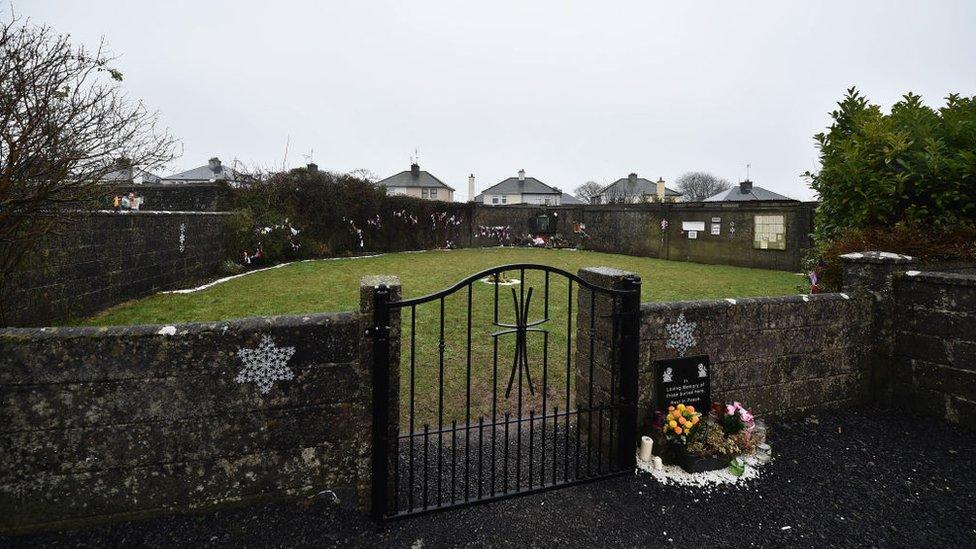
A housing estate was built on the site after the Tuam home was demolished
Mr O'Gorman added that he had made several changes to the draft legislation after listening to the concerns raised by former Tuam residents, relatives and independent experts.
However, a spokesman for the Tuam Home Survivors Network told BBC News NI he was not convinced by the minister's reassurances, adding the deaths should have been investigated under existing law.
Tuam babies scandal
The Tuam home was run by a order of Catholic nuns, the Sisters of Bon Secours. It housed unmarried mothers and their children from the mid-1920s until it finally closed its doors in 1961.
But controversy over the fate of the hundreds of children who died while resident in the home made international headlines in 2014, when it became known as the Tuam babies scandal.
Catherine Corless, a local historian, had spent months trying to find out why there were no marked graves for hundreds of the home's young residents.
She had discovered death certificates for 796 Tuam children for whom there were no corresponding burial records.
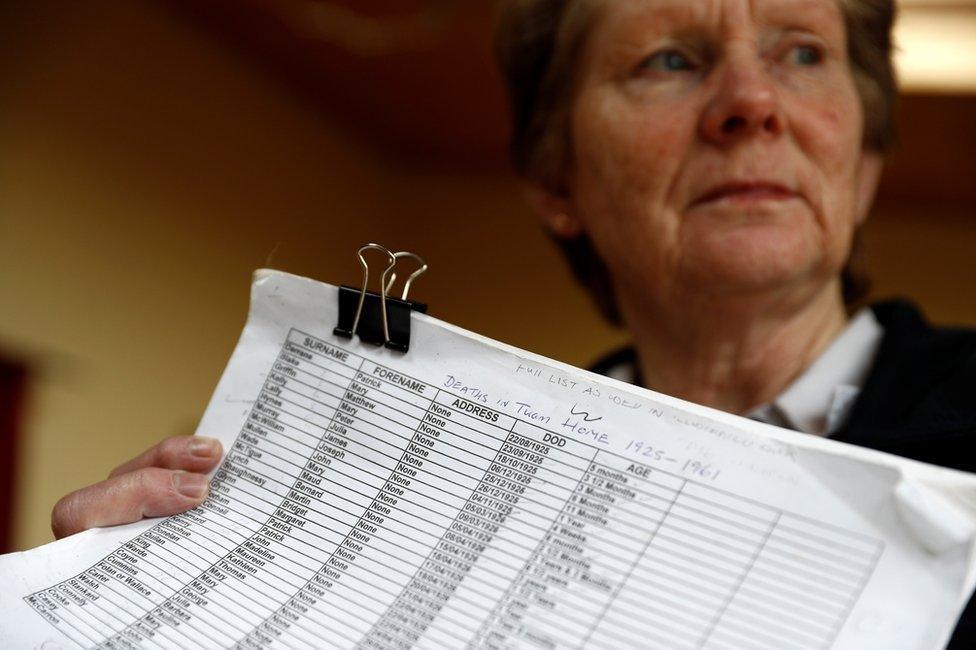
Catherine Corless collated hundreds of death certificates for the infants who died in the home
Media coverage of her findings in 2014 suggested the possibility that some of the children may have been buried in an underground sewage tank.
Public outrage over the claims led the Irish government to set up a commission of investigation into mother and baby homes.
That inquiry later confirmed that a total of 3,251 children were either born in or were admitted to the Tuam home during its period of operation, 802 of whom died of various causes while they were inside the home - almost a quarter of all Tuam's child residents.
Mother and baby homes were usually overcrowded with poor infection controls and the commission found many Tuam deaths were due to diseases like TB, flu, gastroenteritis, meningitis and measles.
Despite a six-year investigation, the commission was unable to locate burial records or official graves for most of those children.
But it did carry out test excavations on the site and in March 2017 the commission confirmed its experts had discovered "significant quantities" of human remains in a underground structure at Tuam.
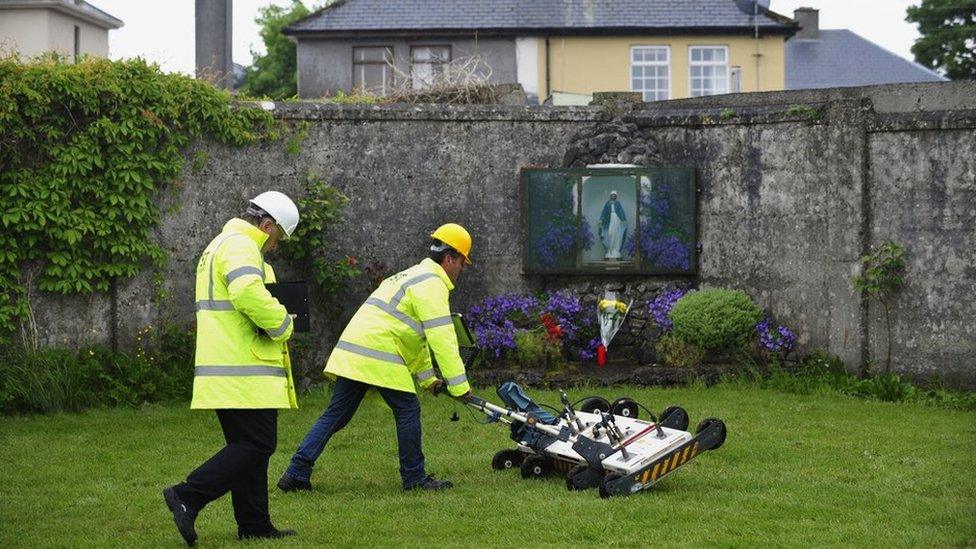
Ground surveys were carried out at the site before the excavation took place
Sample tests confirmed that they were the remains of children ranging in age from premature babies to toddlers, most of whom died in the 1950s.
Disused sewage tank
The structure was divided in 20 chambers but at that stage, its origin and purpose had not yet been determined.
Two years later, the commission published its findings on burial arrangements, saying: "It seems clear that many of the children who died in the Tuam Home are buried in the chambers described."
The order of nuns who ran the home commissioned their own archaeological review which suggested the possibility that the chambers may have been designed for use as a burial vault.
However, the commission dismissed that suggestion, concluding that the chambered structure was positioned inside a disused sewage tank.
"It would be a very unusual decision to construct a burial vault within an operational, or recently operational, sewage tank, " the commission's fifth interim report stated.
"This was not a recognised burial ground or purpose-built burial chamber. It did not provide for the dignified interment of human remains," it added.
The Minister for Children Roderic O'Gorman has spent the last few months preparing new legislation to govern the exhumation, identification and dignified reburial of human remains from mass graves.
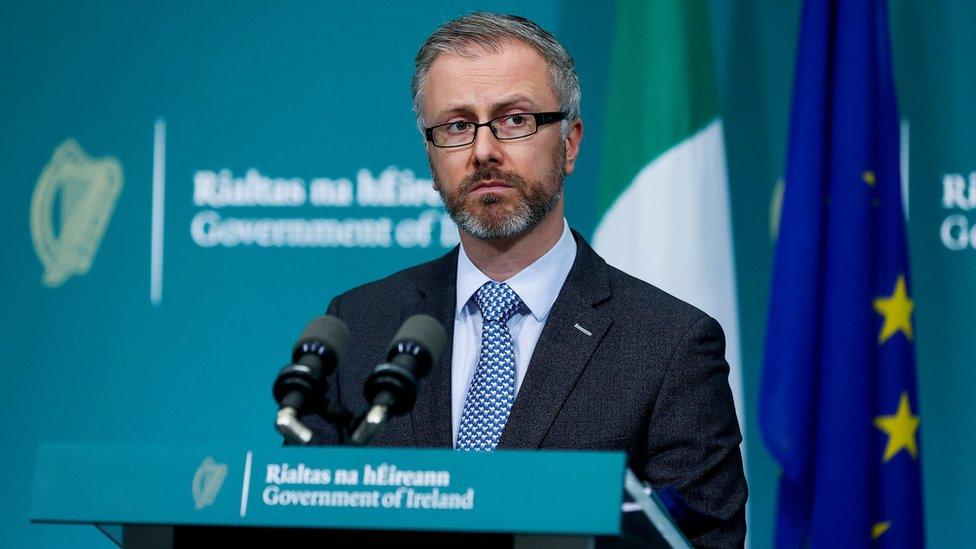
Roderic O'Gorman introduced the amended legislation on Tuesday
Entitled the General Scheme of a Certain Institutional Burials (Authorised Interventions) Bill, it was brought before the Irish Cabinet for approval on Tuesday.
Campaigners had expressed concerns over an earlier version of the proposed legislation, fearing it would remove or dilute the role of a coroner in any future investigation into their loved ones' deaths.
A parliamentary committee examined the proposals last year and also recommended changes.
It said families had an overwhelming need toknow how their loved ones died, not just why they were buried inappropriately.
It said the government should consider intervening at grave sites in cases where deaths were suspicious or unlawful, as well as in cases of inappropriate burials.
The committee also argued for a "stronger balancing" of the rights of relatives of the deceased against the rights of landowners when intervention in a mass grave is considered.
Introducing the amended legislation on Tuesday, the minister said he had listened to their concerns and made a number of important changes.
'Cosmetic exercise'
The amendments include removing restrictions on the jurisdiction of the coroner and widening the group of relatives who can participate in the DNA identification process.
Before it was restricted to immediate family, but the bill widens the rules to include grandparents, grandchildren, aunts, uncles, nieces and nephews of the deceased.
Relatives were also concerned the bill would restrict exhumations to graves dating back just 70 years but the legislation has been amended to cover deaths back to the foundation of the state in 1922.
A director will be appointed to oversee the exhumation process and they must inform both gardaí (Irish police) and the relevant coroner "where evidence emerges of a violent or unnatural death".
However, a spokesman for the Tuam Home Survivor's Network expressed deep scepticism and "disgust" about the whole legislative process in relation to Tuam, saying there was never any need for a new law.
Kevin Higgins argues the children's bodies should have been recovered under existing legislation many years ago and that individual inquests should have been held to determine their cause of death.
The retired solicitor told BBC New NI he does not believe the new bill would do anything to help uncover the truth about why the children's bodies "ended up in a waste water system".
He added he was not convinced by the minister's reassurances about the involvement of coroners.
Mr Higgins described the bill as a "cosmetic exercise," the aim of which is to "exculpate church and state from any liability" in relation to the children's deaths.
Related topics
- Published13 January 2021
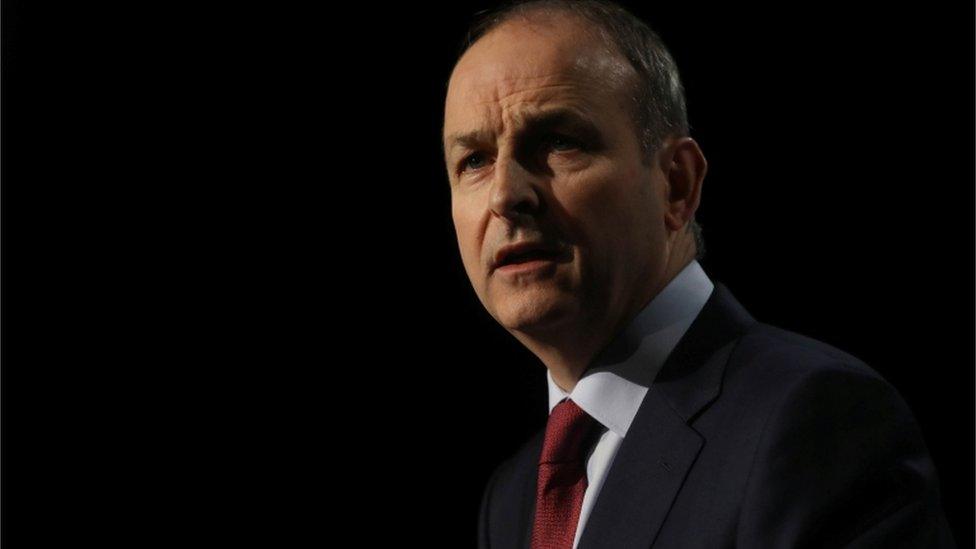
- Published13 January 2021
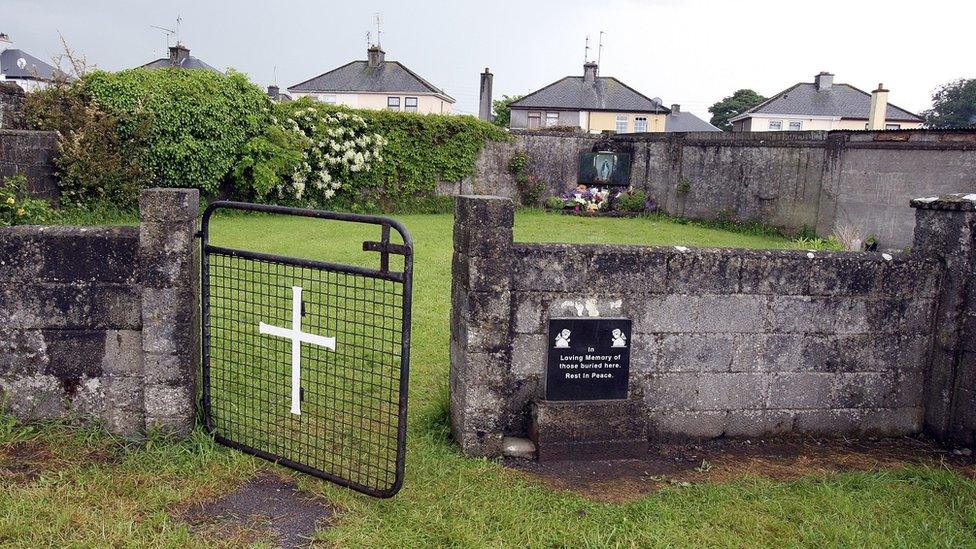
- Published4 March 2017
